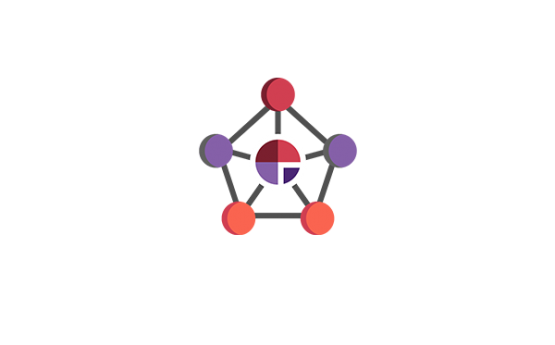Methodologies
Executing a successful Research, Monitoring, or Evaluation services is tailored to meet the diverse needs of projects, ensuring that every initiative is grounded in rigorous and scientifically robust methods for evaluation and evaluation techniques. At DevInsights, we understand that the choice between qualitative, quantitative, or mixed methods is critical, and our experienced team is adept at innovatively exploring alternative approaches. Our decision-making process is informed by key parameters such as study objectives, target respondents, user needs, geographical considerations, data collector identity, analysis plans, and ethical considerations.
The DevInsights research team is not only hands-on but also well-versed in employing the most fitting techniques and designs to meet project requirements. Some of the methodologies we expertly adopt include:

Randomized Control Trials
A Randomized Control Trial (RCT) is a stringent, experimental study design conducted under controlled conditions. Widely recognized as the ‘gold standard,’ this methods for evaluation involves the random allocation of participants to treatment and control or comparison groups. RCTs are instrumental in establishing cause-effect relationships between planned interventions and outcomes. The key to RCTs is the random selection of populations for both the treatment and control groups.
This design requires meticulous planning before the intervention begins, making it particularly valuable for impact evaluations, especially when dealing with large samples and easily measurable intended impacts. The randomization in an RCT can take the form of an individual-level RCT (IRCT) or a Cluster RCT, depending on whether randomization occurs at the individual or cluster (group) level within the program implementation. RCTs are regarded as a robust methodology for determining the true efficacy of interventions, providing valuable insights into the causal relationships at play.
Quasi Experimental Design
Similar to experimental design, Quasi-Experimental Design (QED) serves to assess causal hypotheses and understand the cause-effect relationship. In these cases, our Quasi Experimental Designs serve as robust evaluation techniques to assess cause-effect relationships without random assignment. Instead, the control or comparison group is chosen to resemble the treatment group as closely as possible before intervention implementation.
By selecting a comparable control group, QED aims to capture the population’s status in the absence of intervention, effectively revealing what would have occurred without the intervention. This design can also be applied retrospectively. Various techniques, such as Regression Discontinuity Design and Propensity Score Matching (PSM), are employed to establish a statistically significant treatment and control sample, mitigating the risk of selection bias.
Propensity Score Matching
These evaluation techniques are pivotal in our quasi-experimental setups. The Difference-in-Differences (DID) method is employed during the analysis phase in quasi-experimental designs to compare changes in outcomes over time between treatment and control groups, aiming to estimate the impact of the treatment. Also referred to as the double difference method, DID determines the impact estimate by contrasting the difference in outcomes between treatment and comparison groups both before the intervention (baseline) and after the intervention (end line).
This method involves identifying the indicators of interest and comparing the difference in the values of these indicators before and after the intervention for the treatment group with the corresponding difference for the comparison group. DID effectively controls for factors that remain constant over time in both groups, providing a robust means of isolating the true impact of the treatment.
Descriptive Research

These evaluation techniques are vital for monitoring and evaluation of projects that require an understanding of evolving dynamics or the enduring impacts of interventions.
Cross-Sectional
A cross-sectional study, a form of descriptive research, is employed to determine the prevalence of a specific outcome within a given population at a particular point in time. This study design involves a one-time measurement of both exposure and outcome variables, making it particularly useful for establishing prevalence rates, making comparisons among groups, or examining the distribution of variables at a specific moment.
The fundamental characteristic of cross-sectional studies is their ability to provide a snapshot of a particular situation, intervention, condition, or group within a population at a specific moment in time. This instantaneous view allows researchers to capture a comprehensive overview of the prevalence and distribution of variables of interest.
Longitudinal Cohort
A longitudinal study, a subtype of descriptive research, involves the repeated measurement of the same sample on the same variable over an extended period. This approach allows for the continuous tracking of individuals or groups, providing a more nuanced understanding of changes and trends over time. Commonly referred to as a panel study, the longitudinal design enables researchers to make more acute observations and discern patterns over time, offering a valuable tool for investigating causal relationships compared to cross-sectional designs.
One distinctive type of longitudinal study is the Longitudinal Cohort, where the study sample forms cohorts that are examined over time on the same variables. Cohorts consist of individuals who share a specific defining characteristic, often tied to a common event such as joining or leaving an institution, or a shared birth period. In essence, a cohort study, falling under the umbrella of descriptive research, systematically analyzes the statistical occurrences within a subgroup that shares a relevant characteristic pertaining to the research question.
EXPLORATORY RESEARCH
Exploratory research serves as a valuable tool to investigate problems or issues where existing knowledge is insufficient. Its primary goal is to build familiarity with basic details, generate new assumptions and ideas, and develop tentative theories or hypotheses in areas lacking a comprehensive understanding. Various methods are employed in exploratory research, including secondary research, focus group discussions, in-depth interviews, and the use of standardized patients. These methods collectively contribute to gathering insights and laying the groundwork for more in-depth studies in the future.

Focus Group Discussions
Focus group discussions serve as a qualitative research method designed to delve into the intricacies and depth of opinions surrounding a particular issue. By bringing together a diverse group of participants, the aim is to facilitate open and dynamic conversations that go beyond simple answers, allowing researchers to uncover a range of perspectives and attitudes.
One of the primary strengths of focus group discussions lies in their ability to explore nuances. Participants are encouraged to express their thoughts, share experiences, and engage in dialogue with one another. This interactive setting enables researchers to probe deeper into the reasons behind certain opinions, gaining insights into the underlying motivations and attitudes that may not be apparent in a quantitative survey or individual interview.
In-depth Interviews
In-depth interviews (IDIs) can be characterized as qualitative key informant conversations, involving loosely structured discussions with clients and individuals possessing knowledge relevant to the explored topic. These interviews provide a valuable avenue for researchers to thoroughly investigate a subject, scrutinize systems and processes, and fine-tune data collection efforts. The semi-structured nature of IDIs allows for a nuanced exploration of the topic while maintaining a level of flexibility for in-depth exploration.
Conducted in a one-on-one format, in-depth interviews enable the researcher to delve deeply into the perspectives and experiences of participants. This method is particularly beneficial when seeking detailed insights, uncovering subtle nuances, and understanding the intricacies of a given subject.
Dyad Interviews
Dyad interviews, involving both spouses, offer a unique lens to examine the interdependent relationships within married couples. This approach recognizes the complexities of roles and dynamics within the family. By simultaneously engaging both partners, researchers gain a more comprehensive understanding of shared experiences, communication patterns, and collaborative decision-making within the marriage. Dyad interviews provide a nuanced exploration of the interplay between individual perspectives and shared realities, offering valuable insights into the intricacies of married life.
PRA/PLA
Participatory Rural Appraisal (PRA) methods are characterized by their collaborative and participatory nature, involving hands-on practical training in monitoring and evaluation techniques for partners and stakeholders. This approach actively engages program implementers in every step of the evaluation process. PRA tools can be categorized into three types: Space-related tools, Time-related tools, and Rationale tools. This inclusive methods of evaluation that empowers stakeholders, fosters a sense of ownership, and enhances the effectiveness of evaluation techniques efforts in rural contexts.

Space related
Space-related Participatory Rural Appraisal (PRA) techniques serve as valuable tools for exploring the spatial dimensions of people’s realities. The main goal is to gain insights into how individuals perceive and interact with space within their communities. These methods for evaluation often involve the use of various types of visual maps to facilitate the exploration and representation of spatial information. Visual mapping tools, such as community maps or resource mapping, allow participants to express their knowledge of local spaces, resources, and relationships, providing a visual representation of their perspectives and experiences. This approach enhances the understanding of the community’s spatial dynamics and contributes to more holistic and community-centered development initiatives.
Time-related
Time-related Participatory Rural Appraisal (PRA) methods play a crucial role in examining the temporal dimensions of people’s realities. What sets these methods apart is their ability to allow individuals to express and use their own concepts of time. Unlike more standardized approaches, time-related PRA methods recognize and incorporate the diverse ways in which people perceive and experience time in their communities. This can involve activities like seasonal calendars, historical timelines, or other participatory exercises that help capture the community’s unique temporal dynamics.
By acknowledging and incorporating local perspectives on time, these methods for evaluation contribute to a more nuanced understanding of the temporal aspects of community life and enhance the relevance of development initiatives.
Rationale related
Rationale-related Participatory Rural Appraisal (PRA) techniques serve as valuable tools to delve into the underlying reasons behind specific actions, primarily aimed at establishing cause-effect relationships. These methods are designed to uncover the rationale behind the decisions and behaviors of individuals or communities, providing insights into the motivations and factors influencing their choices. By exploring the reasoning behind actions, these techniques contribute to a deeper understanding of cause-and-effect relationships.
These methods for evaluation are designed to uncover the rationale behind the decisions and behaviors of individuals or communities, providing insights into the motivations and factors influencing their choices.
STANDARDISED PATIENTS/MYSTERY CLIENTS
A standardized patient is a healthy individual who undergoes training to accurately portray the personal history, physical symptoms, emotional characteristics, and everyday concerns of an authentic patient. Rigorously recruited and trained, a standardized patient effectively mimics a real patient, creating a lifelike encounter for clinicians to learn and be assessed on their acquired skills within a simulated clinical environment. These individuals offer a valuable opportunity for learners at various stages of training to receive constructive feedback from a patient’s perspective, enhancing their clinical competence and interpersonal skills.
By choosing DevInsights, you’re partnering with an evaluation company that not only specializes in advanced monitoring and evaluation techniques but also values the integration of innovative methods for evaluation tailored to your specific needs. Our dedication to employing both traditional and cutting-edge evaluation techniques ensures that every aspect of monitoring and evaluation is handled with precision, delivering insights that are both reliable and actionable. Whether you are looking to evaluate societal impacts, business performance, or project effectiveness, our monitoring and evaluation services are designed to provide the clarity and detail you need to make informed decisions and drive positive change.
Share Now
More Services

CAUSAL RESEARCH
a. Randomized Control Trials
b. Quasi Experimental Design
c. Propensity Score Matching
d. Difference in Difference
DESCRIPTIVE RESEARCH
a. Cross-sectional
b. Longitudinal Cohort
EXPLORATORY RESEARCH
a. Focus Group Discussions
b. In-depth Interviews
c. Dyad Interviews
PRA/PLA
a. Space related
b. Time related
c. Rationale related
STANDARDISED PATIENTS/MYSTERY CLIENTS
- Needs Assessment / Situational Analysis
- Concurrent Evaluation / Project Evaluation / Impact Evaluation
- Project Monitoring & MIS
- Socio-Economic StudiesM
- Knowledge Attitude Behavior and Practice (KABP) Studies
- Formative Research / Communication Research
- Literature / Systematic Reviews
- Corporate Social Responsibility (CSR) support services
- Mystery Client / Standardized Patients
- PRA / PLA
- Opinion / Exit polls
- Data analytics / Visualization






